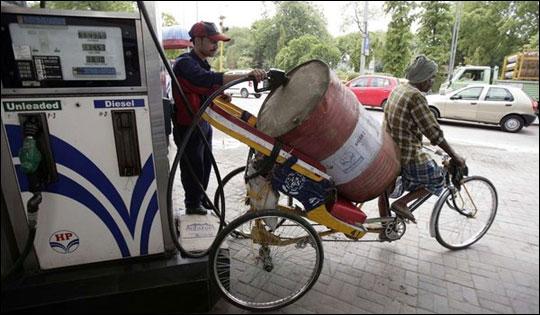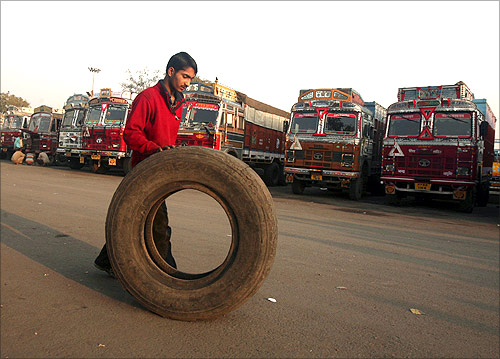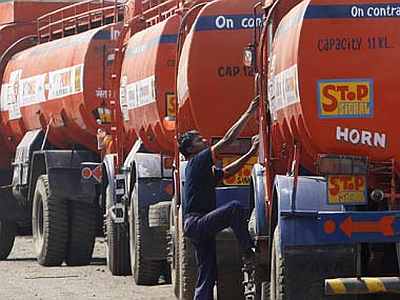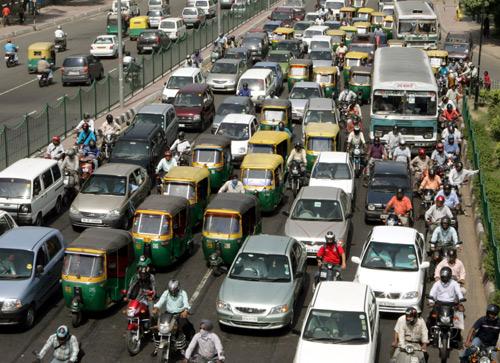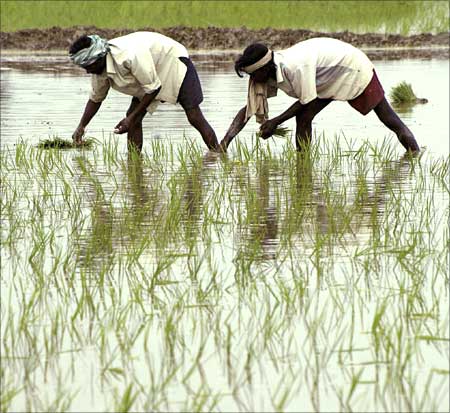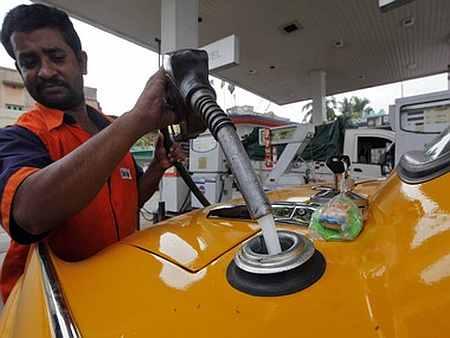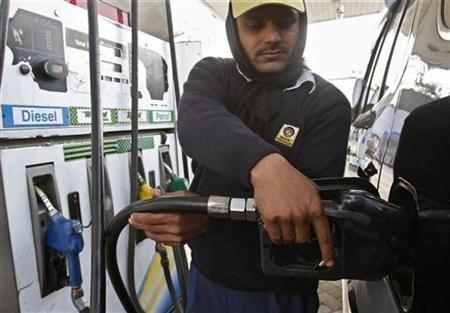 | « Back to article | Print this article |
How technology can help diesel subsidy
If diesel subsidy can be confined to the running of public transport vehicles and agricultural pump sets, then it will stop benefiting private car owners and sundry other unintended recipients, says Subir Roy.
At a time when the government is setting great store by distributing various subsidies through direct cash transfers, there is no reason why the subsidy on diesel cannot be better targeted through the use of the latest technologies available.
If diesel subsidy can be confined to the running of public transport vehicles and agricultural pump sets, then it will stop benefiting private car owners and sundry other unintended recipients.
The operators of trucks, buses and taxis (other than the luxury ones) can be targeted under this subsidy scheme, assuming that auto-rickshaws now run on CNG, which can continue to be appropriately priced. Once this scheme is in place, diesel can be priced at market rates, much like petrol.
Click NEXT to read more...
How technology can help diesel subsidy
The technologies that can make this possible are the global positioning system (GPS) and general packet radio service (GPRS).
Transport and logistics companies like DHL, Blue Dart and Karnataka State Road Transport Corporation as well as fleets of call-centre cars and school buses are increasingly using this technology, which can be said to have matured and is commercially affordable.
A receiver fitted in a vehicle receives a signal from a GPS satellite, fixing the exact position of the vehicle through its spatial co-ordinates. The receiver then transmits this information through an internet or phone connection via GPRS or SMS to an online server.
Click NEXT to read more...
How technology can help diesel subsidy
Through this the fleet operator, whose computer is linked to this server, knows exactly where its vehicle is at any given time.
Let us assume that all trucks, buses and taxis are GPS-enabled in the above way.
Through this the government knows exactly how much distance a public transport vehicle has travelled in, say, a month and decides that it will subsidise the consumption of diesel for journeys up to a certain distance travelled.
Click NEXT to read more...
How technology can help diesel subsidy
Every vehicle is registered in the name of its owner and the subsidy can be transferred to a designated bank account of the owner.
Now trucks and buses can be privately used, but they are still good for carrying only people in large numbers or goods - activities that are to be subsidised. So it will be difficult to use the subsidy to meet private consumption of a wrong kind.
But in the case of a taxi, an owner can use it as a private car and pocket the subsidy. So a decision can be taken to exclude yellow taxis in cities like Mumbai or Kolkata (the ones in Delhi run on CNG) from any diesel subsidy.
Click NEXT to read more...
How technology can help diesel subsidy
As a result, taxi fares will shoot up - but we can say that the <I>aam admi </I>does not use taxis.
Earmarking subsidy for agricultural pump sets running on diesel is more difficult, but not impossible. The first step is that every pump set should be registered in the name of a farmer who has cultivation rights to a plot of agricultural land.
Next comes the need to determine how often and for how long in a year he will need to run his pump set. This will vary according to rainfall in the area during the year and whether he has access to irrigation water.
Click NEXT to read more...
How technology can help diesel subsidy
Satellite imagery is already being used for crop insurance to determine the extent of standing crops or their absence in an area.
Detailed area-specific rainfall data can be collected. (It can be assumed that in a drought year more groundwater will be used.)
Suitable software solutions can be developed to assess how much groundwater is used to grow the standing crop in an area, given its fertility, rainfall received and access to canal water.
Click NEXT to read more...
How technology can help diesel subsidy
Marry these with an assumed fuel efficiency for a pump set (this can be an incentive to use a more fuel-efficient machine) and you will get an idea of how much diesel a farmer uses to grow his crop.
Assumptions will also have to be made on the use of farm technology (hybrid seeds, rice and sugarcane generally need more water).
What is the scope for leakage? A standing crop will imply that water has been used to grow it.
Click NEXT to read more...
How technology can help diesel subsidy
The question is: was the water lifted from underground or accessed from a passing irrigation canal; and if it was groundwater, then was it lifted by a pump set using electricity or diesel?
Proper metering of electricity consumed by pump sets would solve the problem, but that is currently often indeterminable.
Clearly, targeting subsidies to farmers will involve a long-drawn-out effort requiring a combination of several processes and technologies.
Click NEXT to read more...
How technology can help diesel subsidy
So, subsidy for public transport can be launched quickly and that for agricultural pump sets worked upon steadily.
What happens when a farmer has to buy diesel at market prices but is not yet getting a subsidy on it?
Designate some rural and semi-urban retail oil outlets as ration shops that sell diesel to farmers against Aadhaar-linked farmers' identity cards.
Begin with an ad hoc entitlement (like the number of LPG cylinders a year) and then keep fine-tuning it over time according to the above arguments.
<B>Bibhu Ranjan Mishra</B><I> contributed to this article</I>
